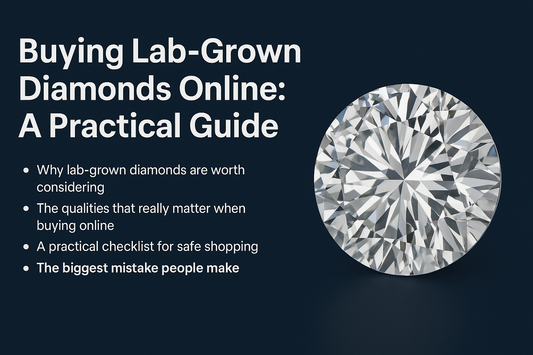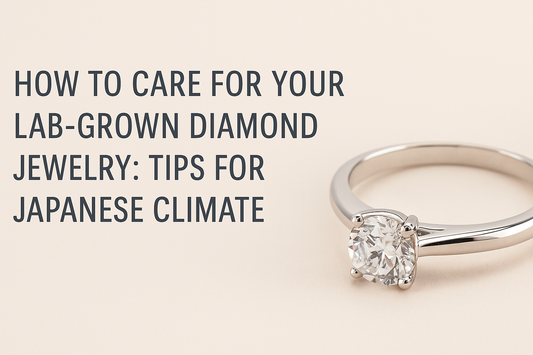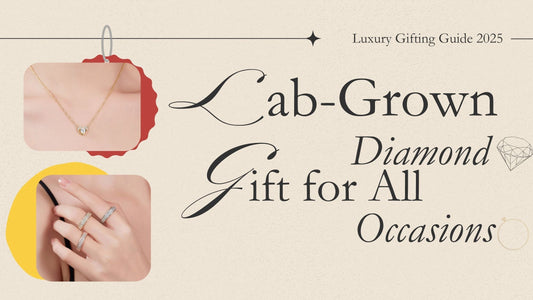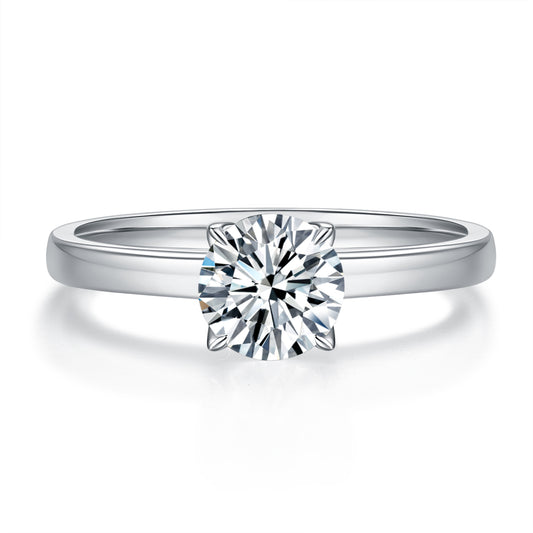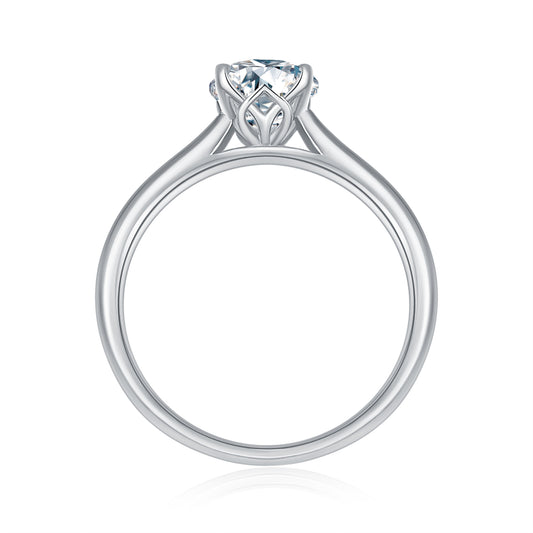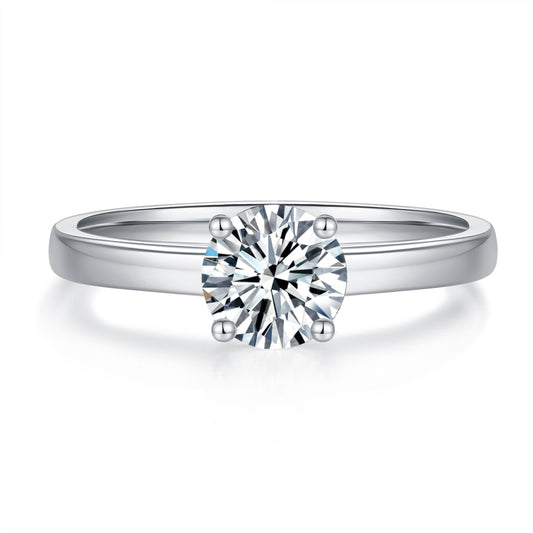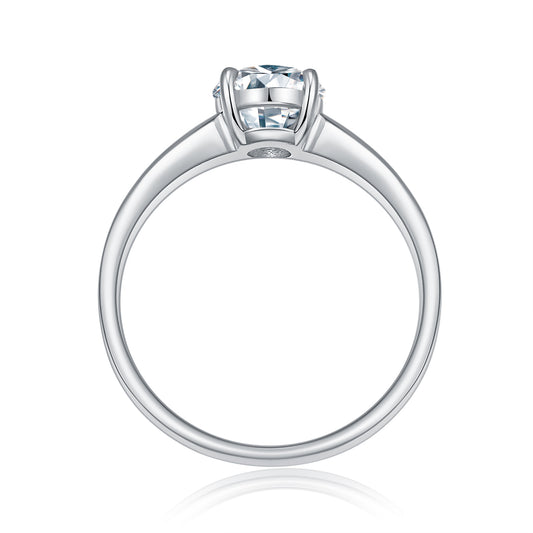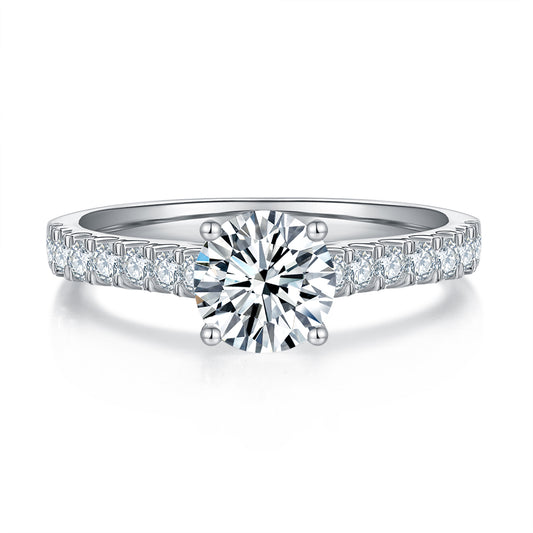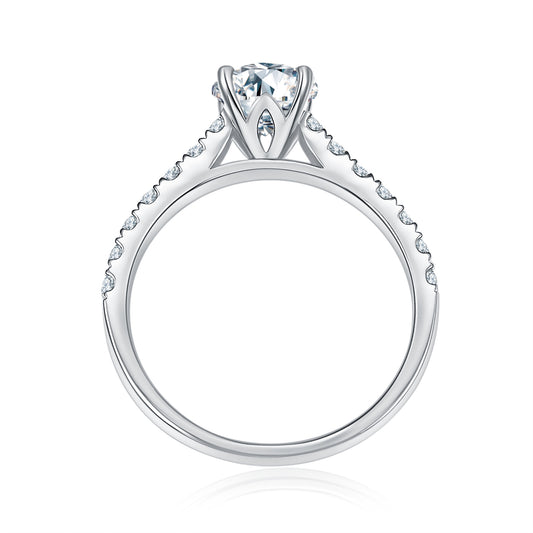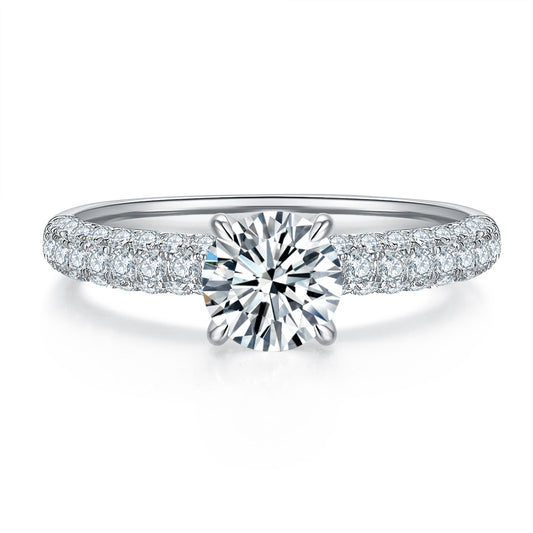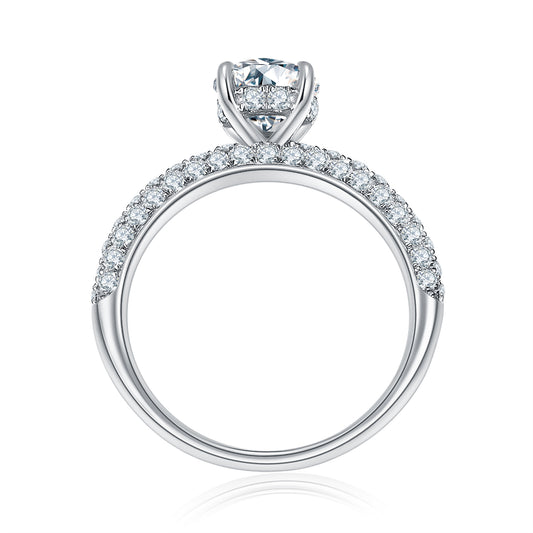日本におけるダイヤモンドとの関係は、文化の変遷、価値観の変化、そして技術革新を物語る興味深い歴史です。欧米のように王室文化と結びついた長い歴史はないものの、日本におけるダイヤモンドの歩みもまた、決して軽視できるものではありません。そして今、ラボグロウンダイヤモンドが採掘ダイヤモンドに代わるサステナブルな選択肢として登場する中、日本はこの「次の章」にいち早く歩みを進めています。
遅れてきた存在:伝統的な日本におけるダイヤモンド
20世紀半ば以前、日本においてダイヤモンドはほとんど文化的な意味を持っていませんでした。伝統的な日本の美意識は、別の宝石や素材を好んでいたのです。
- 翡翠や真珠がジュエリーデザインの主役であり、海や自然とのつながりを象徴していました。
- 金は装飾芸術や宗教的な工芸品の中で高く評価されていました。
- 漆器、陶器、金工などの繊細な工芸は、宝石の輝きよりも重視されていました。
「侘び寂び」という、日本独自の「不完全さ」や「儚さ」の美学は、「永遠の輝き」「完璧な美」を求める西洋的なダイヤモンド観とは対照的でした。時を経て変化する素材や、風化した風合いの方が、むしろ心に響いていたのです。
ダイヤモンド革命:戦後の大転換
日本のダイヤモンド史が本格的に動き出すのは、第二次世界大戦後の高度経済成長期からです。ここにはいくつかの重要な転機がありました。
De Beersによるマーケティングの傑作
1968年、De Beersは「ダイヤモンドは永遠の輝き(A Diamond is Forever)」という伝説的キャンペーンを日本市場に導入します。それまで、日本の結婚文化には婚約指輪の習慣すらありませんでした。ところがこのキャンペーンからわずか10年で、ダイヤモンドの婚約指輪を贈るカップルは5%未満から60%以上へと急増。史上最も成功したマーケティング施策のひとつとなりました。
この流れは、戦後の日本が西洋文化を積極的に取り入れ、そして中産階級の台頭とともに「贅沢品」が手の届く存在となった背景とも深く関係しています。ダイヤモンドは、現代的な洗練と永遠の愛というメッセージを巧みに融合し、日本社会に浸透していったのです。
経済成長とラグジュアリーの消費文化
1970〜80年代、日本が経済大国として世界に躍り出る中で、ダイヤモンドは強力なステータスシンボルとなりました。贈答文化(お土産・お中元など)や企業間のギフト交換といった独自の商慣習も、ダイヤモンドの新たな消費シーンを生み出しました。
東京・銀座は世界的なラグジュアリー街へと変貌し、ティファニーやカルティエなどのハイブランドが続々と旗艦店をオープンさせました。
日本美との融合:デザインの進化
西洋のダイヤモンド文化を取り入れつつ、日本のジュエリーデザイナーは独自の美意識を作品に反映させていきました。
- 無駄のないミニマルなラインとバランスを重視したデザイン
- 精緻な職人技とディテールへのこだわり
- 大粒よりも、小粒で質の高いダイヤモンドへの好み
- 真珠やプラチナなど、和の素材との融合
ミキモトなどのブランドは、輝きだけでなく日本文化の美しさをも体現するジュエリーを生み出していきました。
課題の時代:経済停滞と価値観の変化
1990年代、バブルの崩壊とともに日本は長期的な経済停滞期に突入します。「失われた30年」とも呼ばれるこの時代、ダイヤモンド産業もまた新たな課題に直面しました。
「贅沢」の再定義
バブル崩壊後、目立つ消費(conspicuous consumption)は敬遠されるようになりました。若い世代は「数ヶ月分の給料で婚約指輪を買う」ことに疑問を抱くようになり、そもそも結婚自体の件数も減少していきました。
倫理への関心の高まり
ミレニアル世代やZ世代を中心に、次のような懸念が広がります:
- ダイヤモンド採掘による環境破壊
- 採掘地域における人権問題
- 価値の透明性・トレーサビリティに対する疑念
自然との調和(自然観)を大切にする日本文化において、「環境に負荷をかける宝石」は次第に違和感のある存在となっていったのです。
ラボグロウン革命:日本文化との“理想的な出会い”
そんな中登場したのが、ラボグロウンダイヤモンド。まさに現代日本の価値観にマッチする、新たな選択肢です。
技術力との親和性
精密工学や科学技術において世界トップレベルの日本にとって、ラボグロウンダイヤモンドはまさに“技術の結晶”と言える存在です:
- 科学の進歩と人間の叡智を象徴
- 原子レベルで完璧な構造と、管理された生産工程
- 繰り返し再現可能な精度と信頼性
関西のSeki Diamond Systemsなど、日本企業がCVD技術において世界的リーダーとなっているのも、その象徴です。
環境価値との共鳴
ラボグロウンダイヤモンドは、環境配慮を重視する日本の消費者に対して大きな訴求力を持ちます:
- 環境負荷を大幅に削減:採掘と比べて最大85%の水、50%のエネルギーを節約
- 生態系への影響ゼロ:破壊的な採掘を不要に
- カーボン削減:再生可能エネルギーによる生産で、炭素中立・マイナスも実現可能
「賢く贅沢」な選択肢
節約志向が根付いた現代日本において、ラボグロウンは「手の届く贅沢」を可能にします:
- 同等品質の採掘ダイヤモンドより30〜40%安価
- 透明な価格とサプライチェーン
- 若手層でも手に届くラグジュアリー
「本物」とは何か?という哲学的問い
さらに興味深いのは、ラボグロウンが「本物とは何か?」という価値観の再定義を促している点です:
- 天然の起源が「本物」なのか?
- 人の知恵でつくられたものも「本物」と呼べるのか?
- 技術が自然と人工の境界を曖昧にする時代、価値の基準は何なのか?
こうした問いは、日本哲学における「本質」「見た目」「価値」に関する思索とも響き合います。
未来に向けて:日本とダイヤモンドのこれから
今後、ラボグロウンダイヤモンドは日本においてさらなる広がりを見せていくと考えられます。
デザイナーとのコラボレーション
日本のジュエリーデザイナーたちは、伝統と革新を融合させた新しいスタイルを創造しつつあります:
- 桜や和柄などの伝統的モチーフを取り入れたデザイン
- 真珠や翡翠、漆器などの和素材との組み合わせ
- 実用性を重視した「着回し可能」なモジュール型ジュエリー
技術革新の先導役として
日本の素材科学や精密加工技術は、ラボグロウン分野においても大きな貢献が期待されています:
- 新しい色や性質を持つダイヤモンドの開発
- 省エネ型の育成技術
- ジュエリー以外の分野(電子機器・医療)への応用
文化との共鳴
今の日本社会において、ラボグロウンはこうした新しい価値観とマッチしています:
- 持続可能性と「減らす消費」の重視
- モノより体験を重視するライフスタイル
- 倫理的で透明性の高い商品への志向
- テクノロジーと伝統の融合への美的共感
まとめ:次の章を書くのは私たち
日本におけるダイヤモンドの物語は、常に「受け入れ」と「変化」の歴史でした。外国から来た未知の宝石は、やがて地位の象徴へ、そして今また、その意味が問い直されています。ラボグロウンダイヤモンドは、「ダイヤモンド文化の終焉」ではなく、その自然な進化形なのです。
この変化は、ジュエリーブランドにとっても、消費者にとっても「新たな章」を描くチャンス。テクノロジーと伝統、革新とサステナビリティの融合が、これからの輝きを形作っていくでしょう。
過去を敬い、未来へ進む――そんな日本文化にぴったりな存在。それがラボグロウンダイヤモンドなのかもしれません。
オンラインショールームで、日本が誇るラボグロウンダイヤモンドのコレクションをご覧ください。伝統と革新の出会いが、ここにあります。


